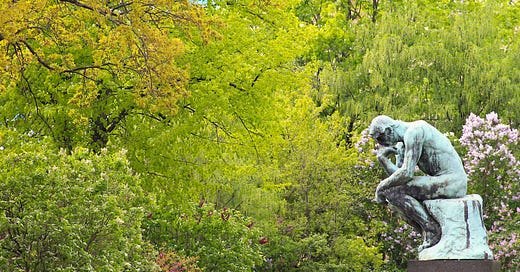Page-Turners to Mind-Openers: Depoliticizing Common Readings Could Lay a Better Groundwork for Learning
What books are being assigned for common reading?
Common reading programs constitute a noble attempt to unite an entire campus through the power of reading and typically aim to foster a sense of community among new students, introduce students to complex ideas and critical thinking skills, and provide a shared intellectual experience. These programs represent a tremendous opportunity for a college or university to set the tone for an incoming class’s educational experience and can signal what the institution’s core purpose and values are.
But what purpose and values are these programs signaling? As detailed below, a review of readily available information suggests many colleges and universities are choosing nonfiction books that focus on the themes of cultural identity and struggles for justice. Books focusing on ‘lived experiences’ can be a fantastic way to expose readers to new and diverse viewpoints. However, these kinds of books may not be adequately preparing students to engage with a wider range of viewpoints and discuss complex and controversial topics, both of which are essential to intellectual growth.
For several years, Penguin Random House has collected extensive data about common reading programs at many universities and colleges across the United States. Those data show that, since the 2017-2018 school year, the most popular book has been Bryan Stevenson’s Just Mercy: A Story of Justice and Redemption. Between 2017 and 2024, it was assigned over 100 times by universities’ common reading program. While its popularity has waned in recent years, it was still recommended by at least six institutions for the 2023-2024 school year.
The top 10 most frequently assigned books between 2017 and 2024 in the Penguin Random House data are shown below. (The links below are affiliate referral links and so HxA will earn a small commission if you buy a book using one of them). The list shows that Just Mercy is not an exceptional type of choice; the list is heavily weighted toward culturally-specific storytelling and narratives about justice-seeking.
Just Mercy: A Story of Justice and Redemption, by Bryan Stevenson, is a memoir that recounts the author's experiences as a young lawyer advocating for justice in the American legal system, focusing on his work with death row inmates and the wrongly convicted.
Educated: A Memoir, by Tara Westover, recounts the author's journey from a childhood in a strict, isolated survivalist family in Idaho to her pursuit of formal education, culminating in her earning a PhD in intellectual history from Cambridge University.
What the Eyes Don’t See: A Story of Crisis, Resistance, and Hope in an American City, by Mona Hanna-Attisha, is an account of the Flint, Michigan, water crisis, detailing the physician-author's work to uncover and address the lead contamination in Flint's water supply.
Between the World and Me, by Ta-Nehisi Coates, is a book-length letter from Ta-Nehisi Coates to his teenage son, exploring the journalist/activist author's experiences and reflections on race in America, including his upbringing in Baltimore, his education at Howard University, and his observations on American history and contemporary society.
The Immortal Life of Henrietta Lacks, by science writer Rebecca Skloot, tells the story of Henrietta Lacks, a poor African American woman whose cells, taken without her knowledge, became a crucial tool in medicine, contributing to numerous scientific breakthroughs while raising questions about medical ethics and the commercialization of human tissues.
Callings: The Purpose and Passion of Work, edited by Dave Isay, is a collection of personal stories from the StoryCorps project, featuring individuals discussing their experiences with and perspectives on their work and careers.
Braiding Sweetgrass: Indigenous Wisdom, Scientific Knowledge, and the Teaching of Plants, by environmentalist Robin Wall Kimmerer, is a collection of essays that explores the relationship between indigenous wisdom and scientific knowledge, focusing on the author's experiences as a botanist and member of the Citizen Potawatomi Nation to examine human interactions with the natural world.
There There, by Tommy Orange, is a novel that follows multiple Native American characters living in Oakland, California, as their lives intersect and converge at a local powwow, exploring themes of identity, history, and urban Native American experiences.
Born a Crime: Stories from a South African Childhood, by celebrity comedian/commentator Trevor Noah, is a memoir that recounts the author’s experiences growing up in South Africa during and after apartheid, focusing on his relationship with his mother and the challenges he faced due to his mixed-race heritage.
Make Your Home Among Strangers, by Jennine Capó Crucet, is a novel about a young Cuban-American woman navigating her first year at an elite college while dealing with family obligations and cultural expectations back home in Miami.
Just because a book is in the top-10 most recommended books doesn’t mean that it was assigned by a great number of common reading programs. There’s lots of variability in what books common reading programs in Penguin Random House’s survey assign. For example, the top book for 2022-2023 (Braiding Sweetgrass) was assigned by only 12 (2.9%) of common reading programs surveyed. Even in the school year where there was most convergence on a book assignment in the data set (2019-2020), only 30 (6.4%) of common reading programs surveyed assigned the book in question—Educated: A Memoir.
Variability notwithstanding, there are still clear trends in the thematic foci of books assigned by common reading programs in the publisher’s survey. Two are worth highlighting.
First, there are clear relationships between significant social and political movements and the rise in certain common reading program book themes, as evidenced by looking at how often certain words appear relative to the most common word in the titles. Think of it like this: if one sees a word becoming more frequent from one year to the next, it means that word is gaining popularity in book titles. To avoid confusion, the values (plotted below) do not represent the percentage of books that had that word in them (for example the 2021-2022 year had only 13 total recommendations with “Black” in the title). For purposes of interpretation, the value itself is not as important as the changes over time.
For example, the year following the 2020 Black Lives Matter movement protests saw an increase in the relative frequency of books recommended with “Black,” “race,” and “slavery” in their titles, analyzed by the wordcloud library in Python.
It is important to note, however, that this increase in relative frequency does not necessarily mean that a majority of institutions have started using books on these topics. The relative frequency of the words can be impacted by a handful of institutions adopting books that contain the certain words. As such, we would caution against over extrapolation to suggest broad and sweeping changes in book recommendations based on these societal trends (as the changes observed can be affected by a few institutions).
Second, the top 10 books and the population of common reading books assigned on the whole in the publisher’s survey have a decidedly liberal slant. Feeding the list of unique book titles through ChatGPT-4o and prompting it to evaluate whether the list of titles coded as more “liberal” or conservative,” we find that book recommendations are on the more liberal side of the spectrum. ChatGPT-4o also identified some common themes from the book titles:
Focus on social justice and racial equality: Many titles emphasize themes such as racial justice, social inequality, and systemic discrimination.
Emphasis on personal narratives and memoirs from diverse perspectives: There is a significant number of memoirs and personal stories from marginalized voices, highlighting their experiences and struggles.
Environmental and indigenous wisdom: Several titles focus on environmental issues and indigenous knowledge, which are often associated with liberal ideologies.
Critical perspectives on historical and contemporary issues: There are a number of books that critically examine historical injustices, current societal problems, and advocate for systemic change.
Promotion of progressive values and ideas: Several titles explore progressive themes such as feminism, LGBTQ+ rights, and social activism.
The heavy emphasis on personal narratives and social justice themes may inadvertently signal to incoming students that college is primarily about exploring questions of identity and advocating for specific political and social causes associated with a more progressive perspective. Exposure to these ideas isn’t necessarily improper, nor should they be avoided as topics of conversation. However, focus on such topics, well-intentioned though it is, risks overshadowing the broader mission of higher education: to cultivate curious, critical thinkers capable of engaging with diverse ideas and perspectives across disciplines and cultural divides.
An alternative or supplementary approach to common reading programs could expose students to a variety of viewpoints on a given topic or introduce them to the art of inquiry itself—teaching them how to think about complex questions in a systematic, careful, and reasonable manner. While it could be said that the books discussed above provide opportunity for discussion about how to think, they are not explicitly geared towards the development of learning how to think, and they also slant toward a particular cluster of political perspectives. Shifting focus toward books about the art of inquiry and thinking could better prepare students for the intellectual challenges ahead and more accurately signal the centrality to the college experience of cultivating a love of inquiry.
What would a reading list aimed at achieving this goal look like? An exhaustive enumeration of qualifying books isn’t possible, but here are some recommendations. These books are focused on the development of critical thought and may appeal to students from different majors because they rely directly on developing ways of thinking that are discipline-agnostic. Most are also not slanted toward one particular cluster of perspectives on social or political issues. (As with above, some of the links below are affiliate referral links and so HxA will earn a commission if you buy a book using one of them).
Thinking Fast and Slow, by Daniel Kahneman, explores the two systems of thinking that drive human decision-making—the fast, intuitive, and emotional system, and the slower, more deliberative, and logical system—examining how these systems shape our judgments and choices in various aspects of life.
How to Think, by Alan Jacobs, examines the process of thinking critically and independently, drawing on diverse sources to explore the challenges of thoughtful engagement in today's world and offering strategies for improving one's cognitive habits.
The Constitution of Knowledge: A Defense of Truth, by Jonathan Rauch, explores the concept of a shared system of validating knowledge in society, examining how this "constitution" works to establish truth and facts, and discussing current challenges to this system in the modern information landscape.
Weaponized Lies: How to Think Critically in the Post-Truth Era, by Daniel Levitin, gives tools for examining how to evaluate statistics, graphs, and wordy arguments, while emphasizing the importance of the scientific method in determining truth from falsehood.
The Excellent Mind: Intellectual Virtues for Everyday Life, by Nathan King, examines the concept of intellectual virtues, exploring various character traits associated with excellent thinkers and discussing how these virtues can be applied and developed in everyday life.
Lost in Thought: The Hidden Pleasures of an Intellectual Life, by Zena Hitz, explores the value and pleasures of intellectual pursuits in everyday life, drawing on examples from various thinkers and the author's personal experiences to examine the role of contemplation and learning in finding fulfillment beyond practical utility.
Thinking in Bets: Making Smarter Decisions When You Don't Have All the Facts, by Annie Duke, applies poker strategies to real-life decision-making, offering insights on how to make better choices under uncertainty by embracing probability and avoiding common cognitive biases.
The Scout Mindset, by Julia Galef, explores the concept of 'scout mindset' as a way of thinking that prioritizes seeing things clearly and objectively, contrasting it with 'soldier mindset,' and offers strategies for developing this approach to improve decision-making and reasoning.
The Love of Learning, by Margarita Mooney, presents a series of dialogues with various scholars, exploring key figures, ideas, and practices that have shaped the liberal arts tradition, discussing topics such as tradition in education, moral exemplars, holistic learning, contemplative education, scientific inquiry, fine arts, and the Great Books.
Cultivating Humanity: A Classical Defense of Reform in Liberal Education, by Martha Nussbaum, presents a philosophical argument for contemporary curricular reform in higher education, drawing on classical ideals to advocate for a liberal education that fosters critical thinking, global citizenship, and narrative imagination across diverse disciplines and perspectives.
Common reading programs represent a unique opportunity for colleges and universities to set the intellectual tone for incoming students. By shifting the focus of common reading programs towards books that emphasize the art of inquiry itself, institutions can help students become better critical thinkers through an examination of critical thought itself. Many would agree with a belief that development of critical thinking abilities is essential for students to flourish in college. It's time for educators, administrators, and higher education stakeholders to reevaluate the goals of common reading programs and consider selections that truly embody the spirit of open inquiry and give students the tools to become lifelong learners.







